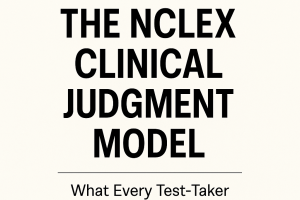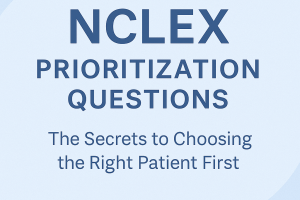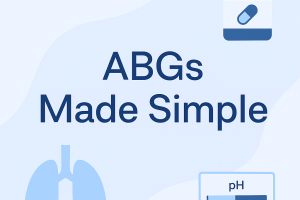Mastering Hypothyroidism and Hyperthyroidism in Preparation for NCLEX Exam

Thyroid disorders, including hypothyroidism and hyperthyroidism, are critical topics for the NCLEX exam. Understanding the pathophysiology, symptoms, diagnosis, and management of these conditions is essential for providing effective nursing care. This blog post provides a comprehensive guide to help you prepare for the NCLEX exam.
Hypothyroidism
Pathophysiology
Hypothyroidism is a condition where the thyroid gland produces insufficient thyroid hormones. This leads to a slowed metabolism, affecting various bodily functions. It is most commonly caused by Hashimoto’s thyroiditis, an autoimmune disorder where the immune system attacks the thyroid gland.
Symptoms
- Fatigue: Persistent tiredness and weakness
- Weight Gain: Unexplained weight gain despite normal or decreased appetite
- Cold Intolerance: Increased sensitivity to cold
- Constipation: Slowed digestive processes
- Dry Skin and Hair: Dry, coarse skin and brittle hair
- Bradycardia: Slower than normal heart rate
- Depression: Feelings of sadness and depression
- Muscle Aches: Muscle stiffness and pain
Risk Factors
- Gender: More common in women
- Age: Increased risk with advancing age
- Family History: Family history of thyroid disease
- Autoimmune Diseases: Presence of other autoimmune disorders
Diagnosis
- TSH Test: Elevated thyroid-stimulating hormone (TSH) levels
- Free T4 Test: Low levels of free thyroxine (T4)
- Thyroid Antibodies Test: Presence of thyroid peroxidase antibodies (TPO) in Hashimoto’s thyroiditis
Management
- Levothyroxine: Synthetic thyroid hormone replacement
- Regular Monitoring: Periodic TSH and T4 tests to adjust medication dosage
- Dietary Adjustments: Adequate intake of iodine and selenium
- Patient Education: Importance of medication adherence and recognizing symptoms of over- or under-treatment
Hyperthyroidism
Pathophysiology
Hyperthyroidism is a condition where the thyroid gland produces excessive thyroid hormones, leading to an accelerated metabolism. The most common cause is Graves’ disease, an autoimmune disorder that stimulates the thyroid gland.
Symptoms
- Weight Loss: Unexplained weight loss despite increased appetite
- Heat Intolerance: Increased sensitivity to heat
- Tachycardia: Rapid heart rate, sometimes irregular (palpitations)
- Nervousness: Anxiety, irritability, and nervousness
- Tremors: Fine tremors in the hands and fingers
- Increased Sweating: Excessive sweating
- Diarrhea: Frequent bowel movements
- Exophthalmos: Protruding eyes (specific to Graves’ disease)
Risk Factors
- Gender: More common in women
- Age: Increased risk in younger and middle-aged adults
- Family History: Family history of thyroid disease
- Autoimmune Diseases: Presence of other autoimmune disorders
Diagnosis
- TSH Test: Low levels of TSH
- Free T4 and T3 Tests: Elevated levels of free thyroxine (T4) and triiodothyronine (T3)
- Radioactive Iodine Uptake Test: Increased uptake in Graves’ disease
- Thyroid Antibodies Test: Presence of thyroid-stimulating immunoglobulins (TSI) in Graves’ disease
Management
- Antithyroid Medications: Methimazole or propylthiouracil to reduce thyroid hormone production
- Radioactive Iodine Therapy: Destroys overactive thyroid cells
- Beta-Blockers: To manage symptoms like tachycardia and tremors
- Surgery: Thyroidectomy in cases resistant to other treatments
- Patient Education: Understanding the importance of medication adherence, monitoring for signs of hypothyroidism after treatment, and managing potential side effects
NCLEX Preparation Tips for Thyroid Disorders
- Understand the Differences: Be clear about the differences between hypothyroidism and hyperthyroidism, including their pathophysiology, symptoms, and management.
- Memorize Key Symptoms: Recognize the common symptoms of both conditions and how they present in patients.
- Diagnostic Tools: Familiarize yourself with the diagnostic criteria and tests for thyroid disorders.
- Management Strategies: Know the various medications, lifestyle changes, and surgical options for managing hypothyroidism and hyperthyroidism.
- Complications: Be aware of potential complications, such as myxedema coma in hypothyroidism and thyroid storm in hyperthyroidism, and their interventions.
- Practice Questions: Utilize NCLEX practice questions focused on thyroid disorders to reinforce your knowledge and improve your test-taking skills.






